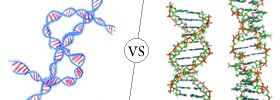Difference between Soy and Soya
Key Difference: Technically speaking, there is no difference at all. Both terms, soy and soya refer to the same thing. They are just two different ways to spell it. The only difference is that it is soy in the US, while it is called soya in Europe.
 Once always hears the benefits of soy and soya, which naturally makes one wonder what is the difference between them. Technically speaking, there is no difference at all. Both terms, soy and soya refer to the same thing. They are just two different ways to spell it. The only difference is that it is soy in the US, while it is called soya in Europe.
Once always hears the benefits of soy and soya, which naturally makes one wonder what is the difference between them. Technically speaking, there is no difference at all. Both terms, soy and soya refer to the same thing. They are just two different ways to spell it. The only difference is that it is soy in the US, while it is called soya in Europe.
The terms mainly refer to the bean, soy bean or soya bean. It is also written as soybean. It is a type of legume which is native to East Asia, but is now widely and popularly grown wherever it can thrive. The UN Food and Agriculture Organization (FAO) classifies the bean as an oilseed rather than a pulse.
However, in addition to the bean, the terms can also refer to products that have been created from soybean products. These products can be categorized into two groups: Traditional non-fermented food and Fermented foods. Traditional non-fermented food includes soy milk, tofu and tofu skin, the latter two of which are created from soy milk. Fermented foods include soy sauce, fermented bean paste, natto, tempeh, etc. Each product has its own production process, which adds and takes away from the original bean.
 Soy bean is also primarily used to soy vegetable oil, as well as textured vegetable protein (TVP). TVP is what most people eat when they talk about soy granules and soy chunks. Soybean is an excellent source of protein, which is also cheap to grow. Hence, it is often used as source of protein for animal feeds and packaged meals, especially in developing countries. It is often recommended as a healthy substituted for meat, in fact, it has more protein than meat.
Soy bean is also primarily used to soy vegetable oil, as well as textured vegetable protein (TVP). TVP is what most people eat when they talk about soy granules and soy chunks. Soybean is an excellent source of protein, which is also cheap to grow. Hence, it is often used as source of protein for animal feeds and packaged meals, especially in developing countries. It is often recommended as a healthy substituted for meat, in fact, it has more protein than meat.
In addition to protein, soy is also highly nutritious and provides essential nutrients such as dietary fiber, iron, manganese, phosphorus and several B vitamins, including folate. It is also rich in vitamin K, magnesium, zinc, potassium, and so much more.
Comparison between Soy and Soya
|
|
Nutritional value of Soy/Soya per 100 g (3.5 oz) |
|
Energy |
1,866 kJ (446 kcal) |
|
Carbohydrates |
30.16 g |
|
Sugars |
7.33 g |
|
Dietary fiber |
9.3 g |
|
Fat |
19.94 g |
|
Protein |
36.49 g |
|
Vitamin A equiv. |
1 μg (0%) |
|
Thiamine (B1) |
0.874 mg (76%) |
|
Riboflavin (B2) |
0.87 mg (73%) |
|
Niacin (B3) |
1.623 mg (11%) |
|
Pantothenic acid (B5) |
0.793 mg (16%) |
|
Vitamin B6 |
0.377 mg (29%) |
|
Folate (B9) |
375 μg (94%) |
|
Choline |
115.9 mg (24%) |
|
Vitamin C |
6.0 mg (7%) |
|
Vitamin E |
0.85 mg (6%) |
|
Vitamin K |
47 μg (45%) |
|
Calcium |
277 mg (28%) |
|
Iron |
15.7 mg (121%) |
|
Magnesium |
280 mg (79%) |
|
Manganese |
2.517 mg (120%) |
|
Phosphorus |
704 mg (101%) |
|
Potassium |
1797 mg (38%) |
|
Sodium |
2 mg (0%) |
|
Zinc |
4.89 mg (51%) |
|
Water |
8.54 g |
Image Courtesy: home.allergicchild.com, healthscams.org.uk









Add new comment